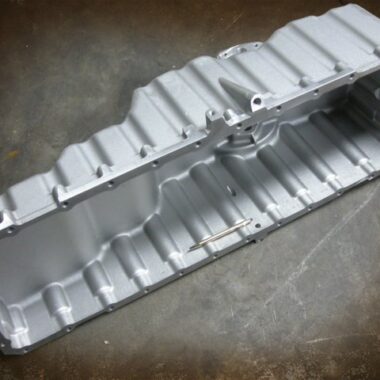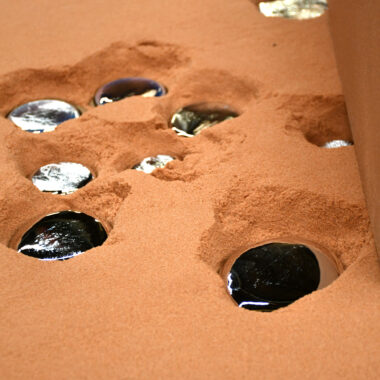About Aluminum Casting Chronicles: Strategies, Trends, and Tips
About Aluminum Casting Chronicles: Strategies, Trends, and Tips
Blog Article
Crafting Perfection: Just How to Achieve High-Quality Aluminum Castings Every Time
In the world of aluminum spreading, the search of perfection is a constant trip that requires a precise strategy and a keen understanding of the ins and outs involved. Accomplishing regular top quality light weight aluminum spreadings requires a comprehensive grasp of the processes, from choosing the ideal alloy to executing precise mold styles and thoroughly regulating spreading parameters.
Understanding Aluminum Casting Processes
Aluminum casting procedures, necessary in the production industry, involve the elaborate improvement of liquified aluminum right into strong forms with a series of very carefully regulated actions. Comprehending these procedures is vital to attaining high-quality aluminum spreadings continually - about aluminum casting. The key approaches made use of in light weight aluminum casting are die casting, sand spreading, and financial investment spreading

Each of these procedures has its benefits and is selected based upon aspects like intricacy, volume, and desired surface of the light weight aluminum spreading. about aluminum casting. Understanding the intricacies of these methods is vital for manufacturers intending to generate top quality aluminum castings constantly
Choosing the Right Light Weight Aluminum Alloy
Choosing the appropriate aluminum alloy is an essential decision in the manufacturing of top quality light weight aluminum castings. When choosing a light weight aluminum alloy for casting, it is necessary to consider the particular requirements of the application to guarantee ideal performance.
Among the most frequently made use of aluminum alloys for spreading is A356. This alloy offers exceptional castability, high toughness, and good rust resistance, making it ideal for a wide variety of applications. 6061 aluminum alloy is favored for its remarkable weldability and excellent mechanical residential or commercial properties. For applications needing high toughness, 7075 light weight aluminum alloy is a preferred choice due to its outstanding strength-to-weight proportion.
In addition to mechanical homes, factors to consider such as expense, accessibility, and post-casting procedures must likewise influence the selection of the best aluminum alloy. By thoroughly assessing these elements, manufacturers can guarantee the production of premium aluminum castings that fulfill the wanted specs.
Carrying Out Appropriate Mold Design
Creating a reliable mold design is essential for ensuring the effective manufacturing of top notch aluminum castings. Correct mold design plays a significant duty in attaining the preferred characteristics of the last product. To apply an effective mold and mildew layout, aspects such as material circulation, cooling prices, and component geometry should be thoroughly considered.
One trick element of blog mold and mildew style is ensuring correct dental filling and solidification of the aluminum within the mold and mildew tooth cavity. This includes developing runner and gating systems that help with smooth steel flow and protect against issues such as air entrapment or insufficient filling. Additionally, integrating cooling networks right into the mold and mildew design assists control solidification prices and decrease the threat of porosity or shrinkage flaws.

Controlling Casting Parameters

Guaranteeing Post-Casting Top Quality Checks
To preserve the premium quality of light weight aluminum spreadings, complete post-casting quality checks are necessary. After the casting procedure is completed, it Click This Link is vital to guarantee that the last products satisfy the desired criteria and specifications. One of the main quality checks includes evaluating the surface coating of the spreadings to identify any type of defects such as porosity, fractures, or surface area abnormalities. This aesthetic evaluation is usually supplemented by non-destructive testing techniques like ultrasonic screening or dye penetrant evaluation to identify internal defects that might endanger the integrity of the casting.
Dimensional precision is one more critical aspect that needs to her response be verified throughout post-casting quality checks. Measurements of vital dimensions and tolerances must be required to verify that the castings satisfy the called for requirements. Additionally, mechanical buildings such as solidity, tensile toughness, and influence resistance might require to be examined with material testing to ensure that the spreadings have the essential toughness and longevity for their desired application.
Final Thought
In final thought, accomplishing premium aluminum castings calls for a comprehensive understanding of the casting processes, picking the ideal alloy, making mold and mildews successfully, managing casting parameters meticulously, and performing post-casting top quality checks carefully. By complying with these actions, producers can regularly create aluminum spreadings that satisfy the highest criteria of high quality and performance.
Accomplishing constant top quality light weight aluminum castings requires a detailed grasp of the procedures, from selecting the ideal alloy to carrying out accurate mold and mildew designs and diligently managing spreading specifications. The key techniques used in light weight aluminum casting are pass away spreading, sand casting, and financial investment casting.
Financial investment casting, likewise known as accuracy casting, includes developing wax patterns that are covered in ceramic to form mold and mildews.Choosing the ideal light weight aluminum alloy is a vital choice in the production of premium light weight aluminum spreadings.Making certain precise control over spreading criteria is vital for keeping uniformity and quality in aluminum spreading manufacturing.
Report this page